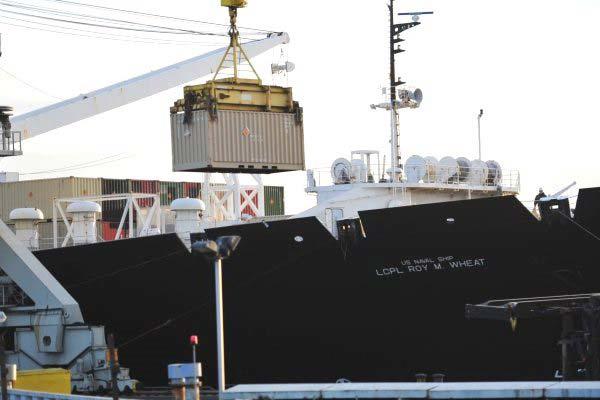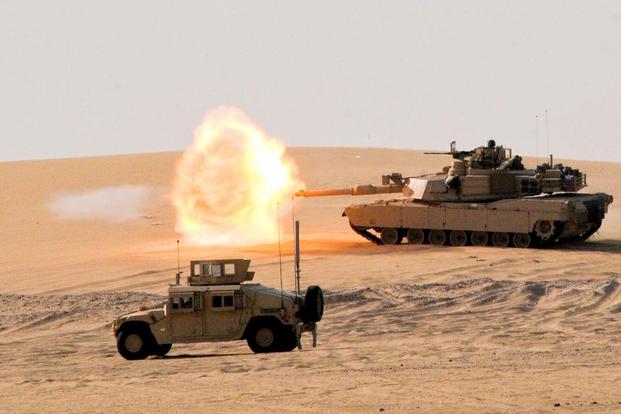The U.S. Defense Department just completed the largest single shipment of ammunition for Army and Air Force units in Europe in more than two decades.
More than 600 shipping containers worth of ammo arrived at the port of Nordenham, Germany, as part of the continued effort to reassure NATO allies in Europe and bolster deterrence against potential Russian aggression.
The ammo build-up is intended to increase the readiness of U.S. forces stationed in Europe, said Lt. Gen. Ben Hodges, commander of U.S. Army Europe in a recent Army press release.
"This is about deterrence," he said. "We could have 1,000 tanks over here, but if we didn't have the ammunition for them they would not have any deterrent effect. It's another example of the commitment of the United States to security and stability in Europe."
The shipment by itself is significant because it equates to more than 620 containers, according to Lt. Col. Brad Culligan, commander, 838th Transportation Battalion, Military Surface Deployment and Distribution Command.
The ammunition will be transported by train to Miesau Army Depot, Germany.
Hodges, who was present for the arrival of the first trainload to Miesau praised the joint nature of the endeavor, adding that German support was a key factor to getting the ammunition where it needed to go.
"The fact that the ammunition came from Nordenham port by rail all the way to Miesau is only possible because our ally, Germany, allows it to happen," Hodges said. "So it's another way that Germany contributes to deterrence, is by enabling the movement of ammunition and equipment inside Germany for the United States Army."
The ammo shipment arrived just before the U.S. Army's 3rd Armored Brigade Combat Team, 4th Infantry Division, stationed at Fort Carson, Colorado, is scheduled to arrive in Europe in January as part of Operation Atlantic Resolve.
The arrival of the 4,000 soldiers from the 3rd ABCT will mark the beginning of a continuous rotation of U.S.-based armored brigades to Europe. The brigade will consolidate in Poland before deploying its units across seven countries from Estonia to Bulgaria beginning in February, according to Army officials.
Hodges said in early October that he also wants anti-drone weapons to counter potential threats from Russia, among other equipment.
Hodges said he would welcome any number of systems to do the job, from newer non-kinetic technologies to older, Cold War-era equipment such as the Avenger, a Humvee equipped with a launcher housing eight FIM-92 Stinger missiles, as well as the German-made Gepard, a twin-33mm cannon mounted on a Leopard tank.
In addition to counter-drone weapons, Hodges said he would like to have more truck-mounted launchers capable of firing MGM-140 Army Tactical Missile Systems, or ATACMS, made by Lockheed Martin Corp.
The Army also plans to equip the 2nd Cavalry Regiment in Europe with the new version of the M1126 Stryker infantry carrier armed with a more potent 30mm cannon in May of 2018.
The service took delivery of the first prototype in October. It features a Kongsberg Medium Caliber Remote Weapon Station, or MCRWS, that houses a potent 30mm cannon. The weapon system, which can be fired from inside the safety of the turret, is capable of engaging enemy targets out to 3,000 meters.
By comparison, Strykers armed with M2 .50-caliber machine guns have a maximum effective range of 1,830 meters on an area target.
"We're bringing ammunition into the theater to resupply and set the stage for the European theater for any type of exercises or potential future missions that may come about," Culligan said.
-- Matthew Cox can be reached at matthew.cox@military.com.






























